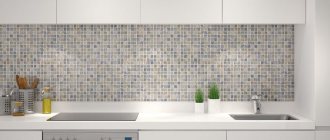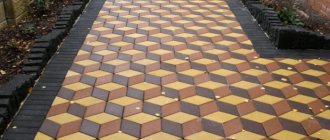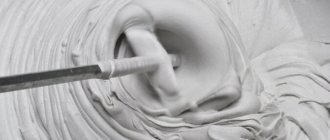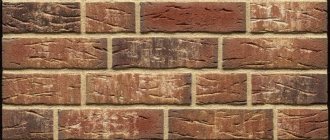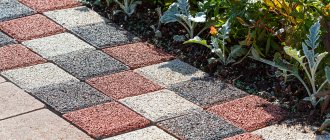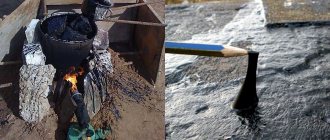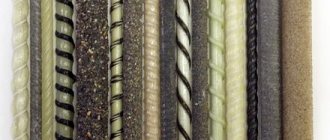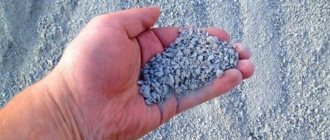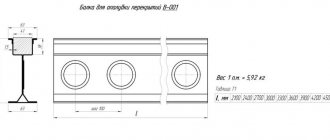Peculiarities
- Epoxy grout, unlike conventional cement grout, is completely waterproof, stable in color, resistant to stains and can withstand contact with most acids and alkalis.
- In addition, epoxy tile grout has a service life of more than 50 years without changes. Over time, the seams do not begin to darken.
- On average, the mixtures allow them to be used to fill joints from 1 to 15 mm when tiling ceramic, porcelain, glass, marble, metal, clinker, porcelain stoneware, agglomerate, natural stone and even wood.
- Epoxy grout is best suited for those premises where high demands are placed on the resistance of the coating to aggressive chemicals: swimming pools, garages and car washes, laboratories, workshops. It can also be used for surfaces that come into contact with food: aprons, countertops.
- Epoxy grout can also be used as a tile adhesive. This is especially true when laying mosaics made of glass and metal, so that the color of the seams and glue does not differ.
What does a mosaic look like after grouting with an epoxy mixture? But not everything is as rosy as we would like. There are also disadvantages:
- High price. In addition to the two-component grout itself, you need to buy a special solution to remove plaque. Imagine how much it will cost you to replace a defective element in a couple of years if you have to buy the same bucket to grout several joints.
- Difficulty at work. A technician without experience can easily ruin the entire result; if used incorrectly, the seams can turn out to be very rough and stains will remain on the surface of the tile. After application, the mixture cannot be leveled with a spatula, but only with a sponge, otherwise it will completely come out of the seam due to its elasticity.
- Rough surface. The epoxy grout itself has a surface similar to sandpaper - many people don’t like this. This is due to the coarse sand fraction, but in some species (for example, Mapei Kreapoxy) it is small and almost invisible. But this texture does not complicate the cleaning of seams from dirt.
Colors
Of course, color plays an important role and is one of the main parameters when choosing grout. It is provided by entering into the general composition immediately or by adding various pigments (dyes) during the mixing process, thanks to which the mixture can be black, white, or any other shade. This is also achieved by adding colored quartz sand and additional shiny components - glitters (for example, gold grout).
However, such diversity not only simplifies the design of the room, but also causes its own difficulties. If you can’t find the right shade, the manufacturer offers special dyes that are mixed with white grout.
There is also a completely transparent mixture that is perfect for working with stained glass windows.
Helpful tips when choosing grout color:
- Beige and pastel epoxy visually unites each tile into one seamless composition. But a dark-colored composition, on the contrary, is capable of visually dividing the wall into separate sections.
- For tiles that include three or more colors at once, or with complex patterns, the composition is selected according to the size of the workroom or surface itself. If the room is small, then the mixture should match the lightest tone, thus unifying the entire pattern. If the room is large, then the grout, on the contrary, corresponds to the darkest color.
- For single-color ceramic tiles, the mixture should be selected based on the colors that were used in the interior design. The grout should create a contrast with the topcoat, but not stand out from the background of the entire tile.
- If the facing tiles look like mosaics, then the mixture should be calm - beige or gray.
- If you can’t choose a suitable color, you can use standard white. However, if the tiles are flooring, then white grout cannot be applied, since over time it will lose its aesthetic appearance and will appear dirty gray.
- The original solution is to choose a mixture to match the furniture elements in the room, and not to match the tiles.
It is worth remembering that the bathroom should not use more than three different shades.
Advantages of epoxy grout
Note that polymer grout is much more expensive than conventional cement grout. The second drawback is the difficulty of cleaning the hardened composition from the front side of the tile or mosaic. Otherwise, grout has the same advantages:
- Seams filled with grout do not absorb dirt and dust. Cured “epoxy” resembles plastic in its properties. Even if dirt sticks to the surface of the seams, it will not be difficult to wash it off. You can use any household chemicals, even strong ones, or clean the seams with a wire brush. The main thing is not to damage the tile itself. This quality is of great importance when cleaning mosaics - the number of seams in this type of coating is an order of magnitude greater than in conventional tiles.
- Epoxy grout for tiles and mosaics does not change color when water or chemicals come into contact with its surface. This material, in principle, does not react in any way upon contact with them and does not absorb any compounds. For this reason, epoxy self-leveling floors, which are similar in formula to grout, are used in the construction of various laboratories and chemical industry enterprises.
- After hardening, epoxy grout does not change its technical characteristics throughout its service life. If you happen to dismantle tiles whose seams were sealed with epoxy grout, you will see that it is as strong as the ceramic itself, and sometimes even surpasses it.
If this is your first time working with this kind of grout, we recommend that you start working with seams in a small area. For example, experiment in the bathroom. The high viscosity of the material makes it difficult to apply grout into voids, but it is worth it.
Flaws
- high cost compared to others;
- short hardening period - you have to knead in small portions;
- Repairs can only be made by completely replacing the tiles;
- The job requires certain professional skills.
We can conclude that all the disadvantages are associated with the characteristics of this grout and its relatively high price. In all other indicators, it is far ahead of its competitors. The high cost is compensated by an unusually long service life without changing properties or appearance.
Application technology
You can begin sealing the seams after the tile adhesive has completely dried, no earlier than 24 hours after completion of the tiling work.
Epoxy grout can only be applied to dry seams that are free of dust and glue.
Important! It is better to use epoxy grout when the thickness of the seams between the tiles is at least two to three millimeters, due to the thick and inelastic structure of the mixture, which is difficult to fill thin seams.
To get a high-quality and reliable result, we carry out the work in the following order:
- We take a small amount of grout onto a rubber spatula and press it into the seam. When using a special bag with a tip, squeeze the mixture directly between the tiles, then level it with a spatula or rubber float.
Figure 6. Sealing joints with epoxy grout.
- Using a wet sponge, we blur the seams, forming an even and smooth seam. In this case, joints that are not filled with grout should not be allowed to become wet.
- Carefully wipe the surface of the tile and grout with a damp cloth.
- We begin to seal the seams on the second grip, performing sequentially the same actions as on the first.
- 40-45 minutes after forming the seam, spray the surface with water from a spray bottle and finally smooth it with a finger in a rubber glove or a sponge. This manipulation will allow you to get a perfectly smooth seam.
Figure 7. Removing excess epoxy grout.
Epoxy grout should gain strength within two to three days. This is especially important for floor joints. Therefore, you should not move on the tile until the grout has completely dried.
Try to keep the epoxy grout on the tile as little as possible. It must be removed without waiting for it to dry.
Any build-up on tiles can be removed by dampening the surface of the tiles with epoxy grout cleaner. First dilute the wash with water according to the instructions.
Figure 8. Epoxy grout remover.
After the solution is absorbed, wash off the film formed on the tile.
Important! The grout's setting time is less than forty minutes, so it must be applied quickly and accurately. In the absence of experience and relevant skills, it is better to entrust these works to professionals.
Scope of application of the composition
Grout based on epoxy resin is suitable for protecting the seams of tile coverings made of different materials: ceramics, clinker, porcelain stoneware, glass products, natural and artificial stone. Considering that this composition hardens quickly, and working with mosaics requires more time, it is better to choose a different type of mixture to cover this type.
If you use a material based on epoxy resin, it will be more difficult to clean the mosaic. It is necessary to remove contaminants from each product. In this case, the grout hardens quickly. You may not have time to remove stains from a large area of the surface.
Epoxy grout for tile joints can be used in different rooms: in the kitchen, bathroom, attic, swimming pool and even on the balcony. This material can withstand significant loads, so it is used for finishing floors, walls, and steps.
The recommended width of seam joints, which can be filled with epoxy resin-based joints, varies from 1 to 15 mm.
The material should be used not only in private housing, but also for the purpose of finishing industrial, commercial, and administrative buildings. More often, such compositions are used at larger facilities with high traffic. This is due to the fact that the epoxy mixture has increased strength. This means that it is not advisable to use it for private houses due to the inconsistency of the parameters with the operating conditions.
Don't miss: Do-it-yourself tile countertop for the kitchen - how to make a kitchen countertop from tiles: photo
The material is suitable for installation of heated floors. It can withstand high temperatures. In addition, there is a lack of destructive processes during the expansion of the material.
Epoxy grout - composition and components
Manufacturers present grout mixtures of this type as two components:
- “A” - epoxy resins with the addition of coloring compounds;
- “B” - organic catalyst - hardener.
Epoxy grout
The combination of components in the recommended proportions leads to the creation of a durable waterproof composition with antibacterial properties.
Epoxy grout consumption.
Consumption can be determined using a formula or a ready-made table. The numbers do not differ from similar indicators for cement grouts.
Formula for determining the consumption of epoxy mixture.
On rough and patterned tiles, the consumption is higher and calculation is difficult. It all depends on the surface and accuracy during application. In such cases, economical consumption is facilitated by application with a gun (video in the playlist), and consumption is calculated based on the wiped area from one container.
Choosing the right composition - how not to get confused in the variety?
Epoxy grout for tile joints has appeared on the market relatively recently - at first it was developed in production facilities, and when a choice of different colors appeared, ordinary consumers also paid attention to the material. Of all the brands, consumers identify only a few proven ones: Litokol, Mapei, Quick-Mix.
Epoxy resin and hardener are sold in two different buckets - purchase all components from the same manufacturer.
When opening a bucket of epoxy resin, many are frightened by its thick consistency - it seems that it has almost hardened and it is simply impossible to mix it. However, after adding the hardener, a polymerization reaction will begin, making mixing easier. However, epoxy grout, regardless of the manufacturer, is very viscous and will not be easy to work with. Especially if you intend to sand the mosaic seams.
When purchasing components, we recommend purchasing cleaning products as well. As a rule, grout manufacturers also offer cleaners. The tools you will need are a narrow spatula with a hard rubber tip, a convenient mixing container, an electric drill and a mortar mixing attachment with small blades, such as a pigtail attachment. The fact is that when mixing with a nozzle with a large number of blades, air bubbles may form, which make the grout structure uneven, reduce the brightness of the color and negatively affect the strength of the material.
Manufacturers
Several of the most famous foreign and domestic manufacturers:
- Litokol (Italy). The material is stored for two years at a temperature of +5°C. The temperature must not be allowed to drop, otherwise the components will become hard and lose all their properties. This manufacturer offers grout in 103 colors, including various additional effects. Suitable for both indoor and outdoor use. The price ranges from the smallest (1 kg) - 1300 rubles, the medium (2.5 kg) - 3500 rubles. up to the largest package (5 kg) – 4000 rubles. Positive qualities of the brand's products:
- No smell.
- Suitable for use in rooms with poor air ventilation.
- Easy to apply.
- High resistance to temperature changes and high humidity.
- Mapei Kerapoxy. The main difference between the products of this manufacturer is that the grout has minimal grain size. However, the range of products is limited: only 26 colors are presented. The manufacturer produces a grout of three components, which is even more resistant to acids and other aggressive chemicals. Price 3 kg – 3500 rub., 10 kg – 5600 rub.
- "Diamant" (Russia). The grout is available in an assortment of 46 colors. But it can only be used to treat the bathroom. Sold in packages of 2.5 kg - from 2000 to 5000 rubles.
- "Basic." The epoxy grout from this company is characterized by high resistance to temperature changes (from – 50 to + 75°C), elasticity, hydrophobic properties and is not prone to the development of fungus. The solution is usable within an hour. The grout is available in 29 colors, packing 2.5 kg - 2000 rubles. In general, it has all the properties that are characteristic of epoxy.
- "Fugue". The product has all the properties characteristic of epoxy grout. Suitable for processing both indoors and outdoors. The solution is usable within two hours. The material is available in 32 colors. The cost varies significantly, for example, in online stores you can purchase 2.5 kg of dry mixture for literally 2,000 rubles, while in retail stores the product will be much more expensive.
Whatever company the buyer chooses, when starting to work, it is necessary to read the instructions on the packaging and act on them.
Tips for use
When purchasing a mixture, you must rely on the following indicators:
- The time it takes for it to dry.
- Chemical resistance.
- Best before date.
- The volume of the packaging itself.
- Grout consumption per square meter.
- Seam sizes.
You can start processing the seams only 24 hours after the actual installation. The seams and surface of the tile must first be cleaned of excess glue.
If the tiles are light in color, then some problems may arise. Sometimes, at the cutting site, when grout mixture or any other liquid gets there, the edges darken. Therefore, 24 hours before work, you need to check the reaction of the tiles, and if the edges darken, protect them with masking tape.
Necessary tools and means:
- Epoxy grout.
- Drill with mixer for mixing the working mixture.
- Container with water.
- Grater with rubber sponge.
- Special cellulose sponge for removing grout.
- Spray bottle filled with water.
- Protective gloves.
- Mixing bucket (or basin).
- Scales.
- Any cleaning agent that is designed specifically for epoxy.
You can immediately purchase special cellulose sponges or synthetic rags from suppliers. The cost of sponges ranges from 500 to 600 rubles, while a rag costs about 150 rubles. Instead of a sponge, sometimes ordinary foam rubber is used. But it deteriorates quickly and picks up the grout a lot.
How to divorce?
The composition is sold in two packages (epoxy component and hardener), in which the substances are in the required proportion. To prepare the working composition, both packages just need to be mixed. However, the composition is operational for no more than an hour, so it is better to independently calculate the required number of components using scales and prepare the required amount of the mixture. It is worth considering that each grout requires its own proportion, so you must read the instructions before calculating.
Additional substances, for example, dye, are added to the finished mixture and mixed.
How to apply?
Instructions for applying epoxy grout yourself:
- Take a small amount of the mixture onto a spatula and rub it over the surface. It is more convenient if two people work: the first applies, the second immediately erodes the grout.
- We wet the sponge in a container of water and blur the seams, the main thing is not to reach the end of the seam. This is done in order not to wet the still dry, untreated tiles, since they must be dry.
- After cleaning the seams, take a new sponge, wet it with water and form them completely.
- Apply a layer of grout again and perform the same manipulations.
- The hardest part to rub is the inner corner. Therefore, it will be easier if you treat one corner first, and the other on the second day.
- To get perfect seams, after about 40 minutes, spray them with a spray bottle and lightly smooth them with your finger.
- If the floor finish has been treated, you should not move on it for the first couple of days, as some grouts can take four days to dry.
Don't miss: Features and benefits of built-in shower systems
Final cleaning stage:
- At the end of the grouting process, a residue remains. But don't worry, it washes off quite easily.
- When painting work is carried out, the seams must be covered with masking tape, otherwise they will deteriorate when the paint is washed off.
- In order to remove plaque, mix epoxy grout cleaner with water, following the instructions.
- Spray the solution onto the wall and give it time to absorb, then wipe it with a lint-covered cloth.
- Then wash off the resulting foam. A self-squeezing mop will do this well.
- The final cleaning stage is carried out with a microfiber cloth.
- It is impossible to completely remove the grout; a thin sticky coating, similar to plastic, will still remain on the surface. White tiles need to be cleaned over a longer period of time to prevent them from becoming yellowish over time.
Preparatory stage
The first thing to do is to clean the tile joints from any remaining adhesive. They must be cleaned more than 2/3 deep.
Remember: no matter how strong epoxy grout is, it needs to hold onto something. Therefore, treat the preparation of seams with all responsibility.
The next step is mixing the mixture. First of all, carefully read the instructions included with the material. It is necessary to maintain the proportions precisely; it is impossible to “by eye”. If you add less hardener than required, the grout will leak from the seams. It will be very difficult to make a tile seam. Otherwise, if there is an excessive amount of hardener, the mixture will harden very quickly and you will not have time to wash the grout off the tile. Use a scale.
You need to mix in small doses - the epoxy quickly thickens under the influence of the hardener and it will be impossible to work with it. Mix the mixture with an electric drill and mixer at low speed. Otherwise, the composition may turn out to be saturated with air bubbles - the seam will turn out porous.
Technology of grouting joints with epoxy grout.
Epoxy grout is also called two-component grout. In a plastic bucket there are two compositions in separate packaging.
The filling process begins with preparing the mixture by mixing paste and liquid.
The first inconvenience lies in the preparation - the mixed composition hardens after 40 - 90 minutes (different manufacturers have different usage times). It begins to thicken even earlier and it becomes more difficult to work. Therefore, it is dangerous to completely mix the contents of the bucket. You have to divide the paste and catalyst in half, and in the absence of experience, even smaller doses. Some epoxy manufacturers have dispensing marks on their containers that you can use to guide you. But, basically, it is assumed that one batch (2 kg) will be made at once.
Divide the epoxy mixture into two batches.
Further, the technology for filling joints is no different from working with cement-based grouts. And the same tools are needed . The only thing is that some of them (cellulose-coated grater and foam sponges) become disposable.
Technology of filling joints with epoxy mixture.
The only thing the instructions pay attention to is the condition of the seam before filling. It must be dry, free of traces of cement and dust. It is also desirable that the seam be 2/3 empty.
Applying epoxy grout to seams
The technological process of filling joints is practically no different from working with cement-based materials. To make it easier, use a spatula made of harder rubber. Epoxy has a high density and it will be quite difficult to work with a regular spatula.
Tip: epoxy materials begin to polymerize immediately after mixing the components. Therefore, grout small areas at once - about 2.0 - 3.0 m2.
Consider one more feature of epoxy grout. It has very poor adhesion (stickiness) to wet surfaces. Therefore, when washing off the applied grout, try not to wet the adjacent unfilled seams. The easiest way to achieve this is to tape the seams adjacent to the area to be washed off with masking tape.
Removing excess grout from the surface
In this case, the process of removing excess must under no circumstances be postponed. No more than 5 minutes should pass between filling the seam and the start of removal - the epoxy thickens before your eyes and it will be very difficult or impossible to remove.
The most common method for removing fresh epoxy grout is with warm water. Wet the surface and use a brush with a fiber attachment to begin removing the epoxy from the surface. The next step is to wash off the residue with a cellulose sponge. Don’t forget to change the water more often without letting it cool down (keep the water temperature within 40°C).
After water treatment, streaks will remain on the tiles. It's OK. That's how it should be. It's still epoxy glue and it doesn't wash off completely with plain water. 24 hours after the first wash, it is necessary to wash off residual stains with special means. Every epoxy grout manufacturer also produces a grout cleaner. Apply the product to the surface of the grouted tiles and wait for 30 minutes. Read the instructions. After this, without using water, wipe thoroughly with a dry cloth. Remember that all work must be performed with rubber gloves.
Advice for beginners: despite the similarity of work with other types of grout, two-component grout has its own characteristics. Try rubbing a few test seams and only then proceed to the main ones.
Details
Color spectrum
Naturally, color plays a rather important role and is one of the main parameters in terms of choosing grout. This is ensured by the pigments included in the composition (sometimes they are added during the mixing process), due to which the mixture can be white, black and other shades. This is also achieved by adding colored quartz sand and additional shiny components (glitters). But this variety not only simplifies the design of the room, but can also cause problems. If you cannot find the required shade, the manufacturing company offers special dyes that will be mixed with snow-white grout. There are also absolutely transparent mixtures that are ideal for working with stained glass windows. Useful recommendations when choosing grout color:
- Pastel and beige epoxies visually unite each of the slabs into a single composition. And dark compositions are able to visually separate walls into separate sections.
- For tiles that contain 3 or more colors at once, or with complex patterns, the composition is selected according to the dimensions of the working surface/room. If the room is small, then the mixture should match the lightest available tone, and thus connect the entire pattern. If the room is large, the grout will match even dark colors.
- For ceramic tiles of a single tone, the mixture is chosen based on the colors that were used in the interior design. The grout should create a contrast with the finish coat, but not stand out against the background of the tile as a whole.
- If the finishing tiles look like mosaics, then the mixture should be gray or beige.
- If you can’t choose the perfect color, then use standard white. If the tiles are flooring, white is not suitable, because after a while the composition will lose its original aesthetic appearance and will appear dirty gray.
- The best solution would be to choose a mixture that matches the tone of the furniture in the room, and not the tone of the tile material.
Remember that when decorating a bathroom you should not use more than 3 different shades.
Recommendations for use
When choosing epoxy grout for bathroom tiles, you should rely on the following indicators:
- The size of the joint space.
- Packaging volume.
- Best before date.
- Chemical resistance.
- Drying time.
- Consumption of epoxy grout for tiles per square meter.
You can start processing the seams only a day after the actual installation. The tile surface and seams should be cleaned of excess adhesive in advance. If the tiles are light, certain problems may arise. Sometimes, at the cutting site, if grout mixture or other liquid gets in, the edges will begin to darken. For this reason, a day before starting work, you should check the reaction of the tiles, and if the edges darken, cover them with masking tape.
You will need the following tools and tools:
- The grout itself.
- Electric drill with a mixer for mixing the mixture.
- Container with water.
- Grater with rubber sponge.
- Specialized cellulose sponge for removing grout.
- A spray bottle filled with water.
- Protective gloves.
- Basin or bucket for mixing.
- Scales.
- All cleaning products that are designed specifically for epoxy grout.
You should also immediately buy special synthetic rags or cellulose sponges from suppliers. The price of sponges is 450-620 rubles, and a rag costs about 170 rubles. Sometimes foam rubber is used instead of a sponge, but it quickly deteriorates and pulls out the grout.
Adviсe
How to breed
The composition is sold in 2 packages (hardener and epoxy component), in which the substances are in the required proportion. To prepare the working composition, you just need to mix both packages, but the composition should be developed within 1 hour, and therefore it is better to independently calculate the required number of components using scales and make the required amount of the mixture. Please note that each grout requires its own proportion, so read the instructions before use. There are additional substances, for example, dye, which are added to the mixture and mixed again.
How to grout tiles with epoxy grout
Instructions for applying the composition yourself:
- Take a little mixture onto a spatula and rub it over the entire surface. It is more convenient if the work is carried out by 2 people at once - the first applies, and the second immediately erodes the grout.
- The sponge should be moistened in a container of water and the seams should be washed out, but not reaching the seams. This is done so as not to wet the still untreated and dry tiles, because they must be dry.
- After cleaning the seams, take a new sponge, soak it in water and finish the job.
- Apply the grout layer again and do all the manipulations again.
- The hardest part to grout is the inner corners, so it will be easier if you work on one corner first, and the second the next day.
- To get perfect seams, after 2/3 hours, spray them with water from a spray bottle and lightly smooth them with your finger.
- If we are talking about finishing the floor covering, then in the first 2-5 days you cannot walk on it, because some grouts dry out within 4 days.
Now that you know how to work with epoxy tile grout, let's look at the final cleaning step:
- At the end of the process, a residue will remain on the tiles, but don't worry, it's easy to wash off.
- When the master is doing painting work, you should cover the seams with masking tape, as they may become damaged when the paint is washed off.
- To remove stains, mix water and epoxy grout cleaner, following the manufacturer's instructions.
- Spray the solution on the walls and give it time to absorb, and then wipe with a lint-lined cloth.
- Rinse off any foam that appears, and a self-squeezing mop will do the job perfectly.
- Next, all you have to do is clean everything with a microfiber cloth.
It is impossible to completely remove the grout; a sticky and very thin coating will still remain on the surface, which looks like plastic. White tiles will have to be cleaned much longer to prevent them from turning yellow after a while.
Operation of epoxy grout joints
Remember right away - despite the quick ability to “set”, epoxy materials completely polymerize within 4-5 days. Until this time, it is undesirable to disturb them - the seams can be damaged, they cannot be corrected, only dismantling the tiles.
Further operation will not be difficult - epoxy seams do not fade or crack. They are not afraid of water - if they become superficially dirty, just rinse them. For decades, tile joints made from two-component grout retain their original freshness.
Possible errors
Before applying other types of mixtures, it is necessary to moisten the surface with water. This is done to increase the adhesion of the grout. However, when working with epoxy material, it is not recommended to wet the surface. Other errors:
- the proportions are violated during the preparation of the mixture;
- the wrong type of solvent is used; when choosing it, you need to pay attention to the manufacturer’s recommendations for the use of the material;
- To work with epoxy grout, the same tools are prepared as for cement compositions; as a result, it is more difficult to achieve the required quality of the coating.
Required tools and materials
For mixing, forming joints and repeatedly cleaning the floor covering from epoxy grout, use:
- Spatula with a washable (reusable) rubber tip that does not harden.
- Any dense and oblong object made of plastic or wood for mixing the mixture.
- Containers (small buckets, plastic cups, dishes).
- Warm water containers for 8-10 liters.
- Sponges - cellulose and porous.
- Alcohol.
- Dishwashing liquid.
- Construction chemicals for removing grout.
- Cotton fabric (rags).
- Electronic kitchen scales.
Alcohol and dishwashing detergent are not necessary. Professional chemistry will play the main role in cleaning.

